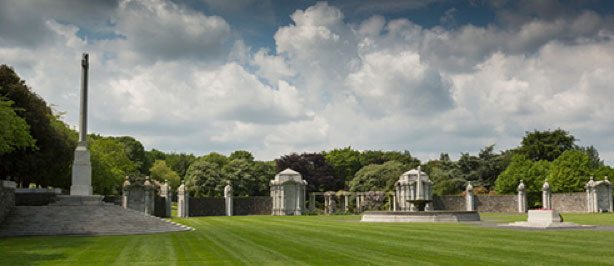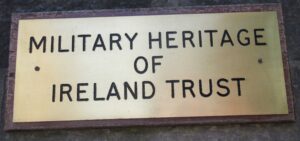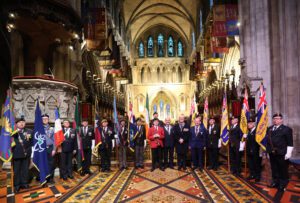A Riverside Sound Art Installation at the Irish National War Memorial Gardens, Islandbridge, Dublin, by Christina Kubisch is a contemporary remembrance of the Irish Soldiers who died in the First World War. On the occasion of the centenary of the Battle of the Somme, the installation was inaugurated on 29 June and will remain open to the public on the southern banks of the River Liffey until 30 September 2016. In 1923, the names of Irish Soldiers who died in the First World War were published in Ireland’s Memorial Records 1914-1918. Consisting of eight volumes, these records, beautifully designed and illustrated by Irish artist Harry Clarke, are housed nearby in the Irish National War Memorial Gardens.

Almost the entire list of these names was read by volunteers of different ages and accents from across Ireland. The sound installation is based on the flow of these male and female voices playing over the banks of the river. The names are heard in alphabetical order, and every name, even when repeated, corresponds to a different person.
The composer has not intervened much in the recordings other than to vary the density, rhythm and flow of names in this four channel installation. Along with small breaks of silence, the composition includes sounds of underwater recordings made in the River Liffey – the rhythm of the passing rowing boats, the hidden natural world of small insects and animals, and the flow of water itself.
Besides artist Christina Kubisch, many other people also played an important role for the realisation of the sound art project. Almost 200 volunteers came to the recording sessions and lent their voices to the piece by reading out more than 40,000 of the Irish soldiers’ names.
Voices of Memory by Christina Kubisch began as an idea in 2014 when the Goethe-Institut Irland, invited Christina Kubisch to visit to Dublin to see if she would be interested in making an artwork at Islandbridge.
“While visiting the pavilions in the gardens which house photographs and memorabilia from World War I, I was particularly taken by a beautifully illustrated book on display. This book was one of 8 volumes of Ireland’s Memorial Records, compiled by the Committee of the Irish National War Memorial under the direction of the Earl of Ypres and published in 1923 with the stunning illustrations by artist Harry Clarke. The books were intended to serve as a lasting memorial to the thousands of men who served in Irish regiments and died during the Great War. The volumes list the names of almost 50,000 individuals that came from all over Ireland, North and South and as well other countries. As well as their names, they record the birth place and the dates of death of the fallen soldiers. Looking at this book the number of names seemed endless and the loss of life quite incredible. While reading some of the pages I noticed a lot of repetition; many names sound similar or are even the exact same. For example, there are 44 listings of young men all named John Ryan! In my work as a sound artist and composer I have worked with the human voice on many different occasions. However, this list of names is very special because of the political and emotional impact it has. I believed these names should not only be read but also be heard, as a flow of voices in a never ending sequence, as a kind of composition with subtle reworking. And as a way to commemorate all these dead people.”
The impact of seeing Ireland’s Memorial Records 1914–1918 illustrated by the Irish artist Harry Clarke, and the setting of the Irish National War Memorial Gardens by the river was the beginning of a journey which led to the sound artwork Voices of Memory. The commission has developed into a profound remembrance of the Irish killed in the First World War.
Voices of Memory would not have come about without the partnership and support and enthusiasm of many people and organisations. The endorsement of the commission by the Trustees of the Irish National War Memorial Gardens and the Department of Arts, Heritage and the Gaeltacht was significant and the involvement of the Office of Public Works is invaluable.






